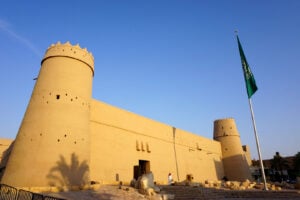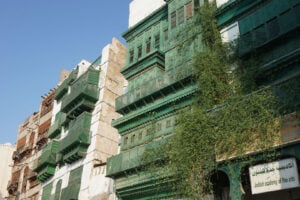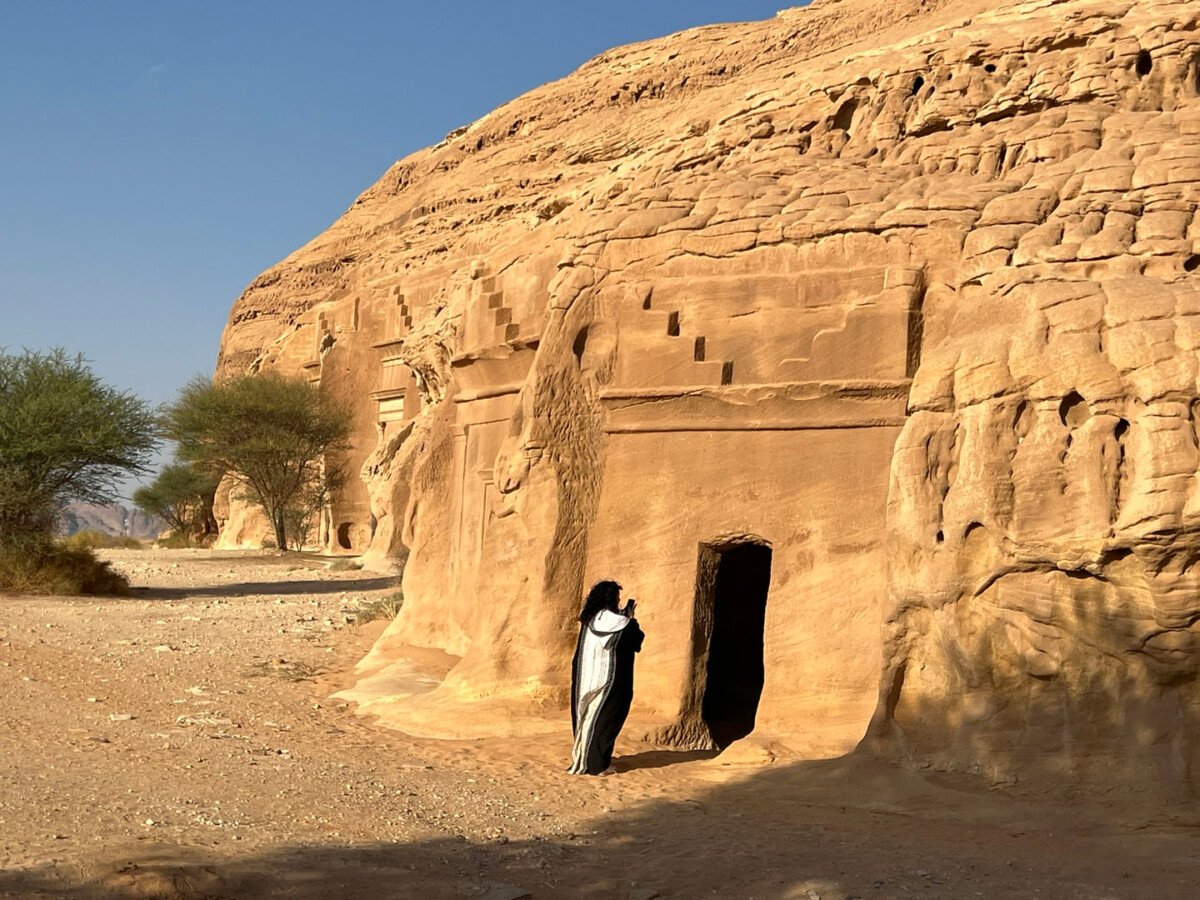Saudi Arabia: where religion and culture meet
Come with us to the Arabian Peninsula. Saudi Arabia is still virtually undeveloped as a tourist destination. The land of oil sheiks, Mecca and deserts is (at least for people from the west) one of the most closed countries in the world. A holiday in Saudi Arabia is therefore not on the bucket list of most people, which is not surprising: tourist visas have only recently been issued. The country, ruled by the Saud dynasty, is one of the largest oil producers in the world. It is also the oil that has made the country one of the richest in the world. And while it is a strict Islamic country, the rules for tourists are not nearly as strict. So visit Saudi Arabia before the rest of the world comes.






The trip to Saudi Arabia was flawless and I felt safe and in good hands at all times.
Laetitia de Pelichy (France)
Riyadh
The capital Riyadh is a modern Arab city with wide roads and many shopping centres. It is a large metropolis with the iconic skyscraper Kingdom Tower (the bottle opener ) dominating the skyline. Riyadh also has historical sites such as Masmak Fort and Al Bujairi Heritage Park. There is also much to discover outside Riyadh, such as the famous canyon of the Edge of the World, a few hours driving from the city.
Jeddah
The city of Jeddah on the Red Sea is the Cultural heart of the country. The centre is full of impressive Ottoman buildings. Many houses were built in the old town with coral from the Red Sea and are unique in the world. The city is also the traditional starting point for the Hajj for many pilgrims. For centuries, boats full of pilgrims from all over the world have been coming here.
The province of Asir
In the past, boundaries were less clear than today. Therefore, cultural heritage also crossed current national borders. Southwestern Saudi Arabia is home to tribes that have more Yemeni culture and customs than Arab. In this area you will also find the famous mud houses. In addition, the province of Asir is known for its beautiful nature. Due to its high location (up to 2900 meters), it is a fairly green area. Which in itself is quite remarkable for a country that is mostly desert.
Madain Saleh
One of the most famous places in Saudi Arabia is Madain Saleh (also known as Hegra). This ancient city is historically linked to the famous Jordanian heritage site Petra, both are on the same caravan route. If you put photos of both locations next to each other, you will immediately see the similarity – Imposing structures carved in rocks. For many people, a visit to Madain Saleh is one of the highlights of a trip to Saudi Arabia.
From prehistoric times to the 6th century, residents of the area were mainly nomads who were influenced in culture and religion by the Roman and Persian Empire. Residents were Christian or adherents of older religions.
Start of a new religion
Mohammed was born in Mecca in 571. His successor Caliph Abu Bakr attacked the Byzantine (Roman) Empire in the early 7th century. From then on things went fast: together with the Arab armies, Islam spread rapidly across North Africa and the Middle East. Although centres of power quickly moved to major cities such as Cairo, Baghdad and Damascus, Mecca and Medina remained very important religious sites.
In the Middle Ages, most of the area around Mecca was populated by the Hashemites. They were directly related to Mohammed. At the beginning of the 16th century, the Ottoman Turks conquered the holy cities of Mecca and Medina. More to the east (around the city of Riyadh) a new kingdom emerged around 1750 with Mohammed bin Saud in power. Together with Mohammed ibn Abd al-Wahhaab, he founded a new state in which politics and religion were closely linked. In the centuries that followed, this state became increasingly influential.
Saudi Arabia
The Ottoman Empire was one of the big losers from the First World War. The Middle East was largely in the hands of the British and the French. The Saudi dynasty had taken over almost the entire Arabian peninsula, including the holy cities. In 1932, the country was united under King Abdul Aziz al-Saud.
The discovery of large amounts of oil in 1938 profoundly changed the country’s economy. In addition, the regime’s power base was strengthened by the purchase of weapons financed from the oil revenues.
Present day
The country itself remains a very conservative and traditional country. The fundamentalists – Islamic Wahhabism remain strongly connected to power in the country. However, things are also changing in Saudi Arabia, albeit with small steps. For example, women have been allowed to drive for a few years now. In addition, the rules for applying for a visa have been greatly relaxed.
Already know what you are looking for?
Blog posts about Saudi Arabia

5 Must-Visit Beautiful Places in Saudi Arabia
Saudi Arabia is a diverse travel destination with a range of experiences for visitors. Whether you’re interested in history and culture or adventure and outdoor…

Best group tours for solo travelers
This article will describe the most unique and hard to reach destinations as a solo traveler. If you are looking for new adventures, then this…

4 Fun Facts about Saudi Arabia
Saudi Arabia is a country with a rich history and culture, and it is an increasingly popular destination for tourists. While many know the country’s…

Al-Ula: Discovering the Enchanting Oasis of Saudi Arabia
Nestled in the heart of the Arabian Peninsula, Al-Ula captures the timeless charm of Saudi Arabia, offering a mesmerizing blend of natural wonders and cultural…

Saudi Arabia opens up again for tourism
Saudi Arabia announced that it is allowing tourists in again from August 1, 2021 . The country stopped issuing tourist visas in March 2020, so they are starting it again…
